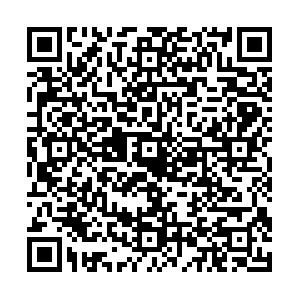| [1] |
SUN H P, LI A, XU Y, et al. Secular trends of reduced visual acuity from 1985 to 2010 and disease burden projection for 2020 and 2030 among primary and secondary school students in China[J]. JAMA Ophthalmol, 2015, 133(3): 262-268. doi: 10.1001/jamaophthalmol.2014.4899
|
| [2] |
SUN J, ZHOU J, ZHAO P, et al. High prevalence of myopia and high myopia in 5060 Chinese university students in Shanghai[J]. Invest Ophthalmol Vis Sci, 2012, 53(12): 7504-7509. doi: 10.1167/iovs.11-8343
|
| [3] |
JONAS J B, ANG M, CHO P, et al. IMI prevention of myopia and its progression[J]. Invest Ophthalmol Vis Sci, 2021, 62(5): 6. doi: 10.1167/iovs.62.5.6
|
| [4] |
PAN C W, CHEUNG C Y, AUNG T, et al. Differential associations of myopia with major age-related eye diseases: the Singapore Indian Eye Study[J]. Ophthalmology, 2013, 120(2): 284-291. doi: 10.1016/j.ophtha.2012.07.065
|
| [5] |
HE M, XIANG F, ZENG Y, et al. Effect of time spent outdoors at school on the development of myopia among children in China: a randomized clinical trial[J]. JAMA, 2015, 314(11): 1142-1148. doi: 10.1001/jama.2015.10803
|
| [6] |
JIN J X, HUA W J, JIANG X, et al. Effect of outdoor activity on myopia onset and progression in school-aged children in northeast China: the Sujiatun Eye Care Study[J]. BMC Ophthalmol, 2015, 15(1): 73. doi: 10.1186/s12886-015-0052-9
|
| [7] |
JONES-JORDAN L A, SINNOTT L T, COTTER S A, et al. Time outdoors, visual activity, and myopia progression in juvenile-onset myopes[J]. Invest Ophthalmol Vis Sci, 2012, 53(11): 7169-7175. doi: 10.1167/iovs.11-8336
|
| [8] |
XIANG Z Y, ZOU H D. Recent epidemiology study data of myopia[J]. J Ophthalmol, 2020, 2020: 4395278.
|
| [9] |
XIONG S, SANKARIDURG P, NADUVILATH T, et al. Time spent in outdoor activities in relation to myopia prevention and control: a Meta-analysis and systematic review[J]. Acta Ophthalmol, 2017, 95(6): 551-566. doi: 10.1111/aos.13403
|
| [10] |
ROSE K A, MORGAN I G, IP J, et al. Outdoor activity reduces the prevalence of myopia in children[J]. Ophthalmology, 2008, 115(8): 1279-1285. doi: 10.1016/j.ophtha.2007.12.019
|
| [11] |
YANG L E, HOFFMANN P, SCHEFFRAN J. Health impacts of smog pollution: the human dimensions of exposure[J]. Lancet Planet Health, 2017, 1(4): e132-e133. doi: 10.1016/S2542-5196(17)30067-0
|
| [12] |
FLITCROFT D I, HARB E N, WILDSOET C F. The spatial frequency content of urban and indoor environments as a potential risk factor for myopia development[J]. Invest Ophthalmol Vis Sci, 2020, 61(11): 42. doi: 10.1167/iovs.61.11.42
|
| [13] |
HESS R F, SCHMID K L, DUMOULIN S O, et al. What image properties regulate eye growth?[J]. Curr Biol, 2006, 16(7): 687-691. doi: 10.1016/j.cub.2006.02.065
|
| [14] |
魏本荣, 曲文超. 青少年睡眠质量现状及其影响因素研究[J]. 健康大视野, 2019(5): 16-17. https://www.cnki.com.cn/Article/CJFDTOTAL-ZHHL201310020.htmWEI B R, QU W C. Study on sleep quality of adolescents and its influencing factors[J]. Health Horizon, 2019(5): 16-17. https://www.cnki.com.cn/Article/CJFDTOTAL-ZHHL201310020.htm
|
| [15] |
ZOU Y, HE M J, SU D T, et al. The current status of insufficient sleep duration and its influencing factors among children and adolescents: a household based cross-sectional study in Zhejiang Province, China[J]. J Pediatr Nurs, 2021, 60: e1-e5. doi: 10.1016/j.pedn.2021.02.009
|
| [16] |
COUSTALS N, MENARD M L, COHEN D. Aripiprazole in children and adolescents[J]. J Child Adolesc Psychopharmacol, 2021, 31(1): 4-32. doi: 10.1089/cap.2020.0014
|
| [17] |
许韶君, 万宇辉, 徐增辉, 等. 体育锻炼、睡眠和家庭作业时间与中小学生疑似近视的关系[J]. 中华流行病学杂志, 2016, 37(2): 183-186. doi: 10.3760/cma.j.issn.0254-6450.2016.02.006XU S J, WAN Y H, XU Z H, et al. Association between time spent on physical exercise, sleep, homework and suspected myopia among students[J]. Chin J Epidemiol, 2016, 37(2): 183-186. doi: 10.3760/cma.j.issn.0254-6450.2016.02.006
|
| [18] |
JEE D, MORGAN I G, KIM E C. Inverse relationship between sleep duration and myopia[J]. Acta Ophthalmol, 2016, 94(3): e204-e210. doi: 10.1111/aos.12776
|
| [19] |
STONE R A, PARDUE M T, IUVONE P M, et al. Pharmacology of myopia and potential role for intrinsic retinal circadian rhythms[J]. Exp Eye Res, 2013, 114: 35-47. doi: 10.1016/j.exer.2013.01.001
|
| [20] |
LIM L S, GAZZARD G, LOW Y L, et al. Dietary factors, myopia, and axial dimensions in children[J]. Ophthalmology, 2010, 117(5): 993-997. doi: 10.1016/j.ophtha.2009.10.003
|
| [21] |
曾寒君, 许韶君, 陶芳标. 维生素D与近视关联的研究进展[J]. 中国学校卫生, 2018, 39(6): 952-955. doi: 10.16835/j.cnki.1000-9817.2018.06.047ZENG H J, XU S J, TAO F B. Research progress in relationship between vitamin D and myopia[J]. Chin J Sch Health, 2018, 39(6): 952-955. doi: 10.16835/j.cnki.1000-9817.2018.06.047
|
| [22] |
NG F J, MACKEY D A, O'SULLIVAN T A, et al. Is dietary vitamin a associated with myopia from adolescence to young adulthood?[J]. Transl Vis Sci Technol, 2020, 9(6): 29. doi: 10.1167/tvst.9.6.29
|
| [23] |
PAN M, ZHAO F, XIE B, et al. Dietary omega-3 polyunsaturated fatty acids are protective for myopia[J]. Proc Natl Acad Sci USA, 2021, 118(43): e2104689118. doi: 10.1073/pnas.2104689118
|
| [24] |
余民强. 让学生课间10分钟"野"起来[EB/OL]. (2021-04-27)[2022-02-05]. http://www.jyb.cn/rmtzgjsb/202104/t20210427_551270.html.YU M Q. Get students "Wild" in the first 10 minutes of lesson[EB/OL]. (2021-04-27)[2022-02-05]. http://www.jyb.cn/rmtzgjsb/202104/t20210427_551270.html.
|
| [25] |
LIANG Y, KEE C S. Risk factors for myopia in 2 Hong Kong school systems: a pilot study[J]. Asia Pac J Ophthalmol (Phila), 2022, 11(1): 19-26.
|

 点击查看大图
点击查看大图





 下载:
下载: